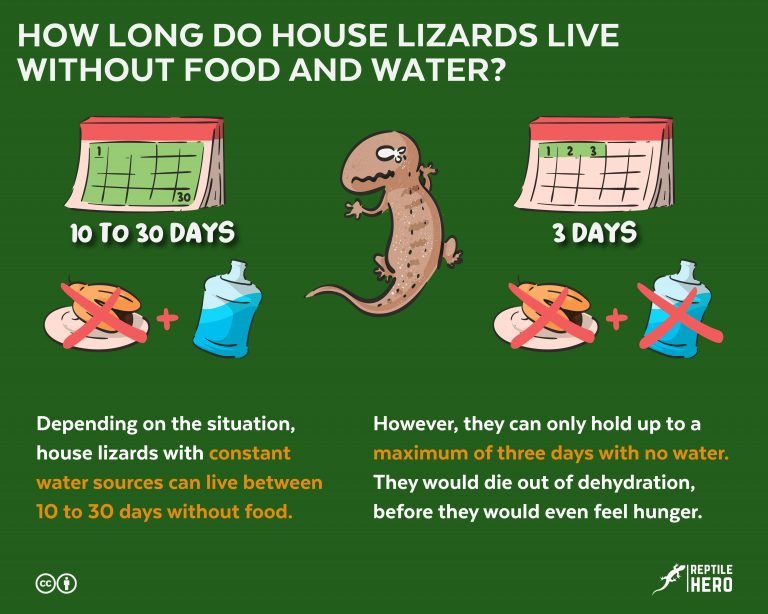What Kind Of Water Can Geckos Drink? (One Can Be Dangerous)
It seems there’s always a debate on what’s the right or best way to do things within the gecko community – even on the topic of water. So, is there really a right or wrong choice when it comes to helping your geckos get enough water?
Geckos need water for optimal physiological functioning. They acquire water in 3 ways: direct drinking, metabolic water production, and moisture-harvesting. Spring and filtered water are suitable for drinking, soaking, and misting. Distilled water should only be used occasionally as it can be dangerous.
Which beliefs and practices actually hold water? Read until the end to find out!
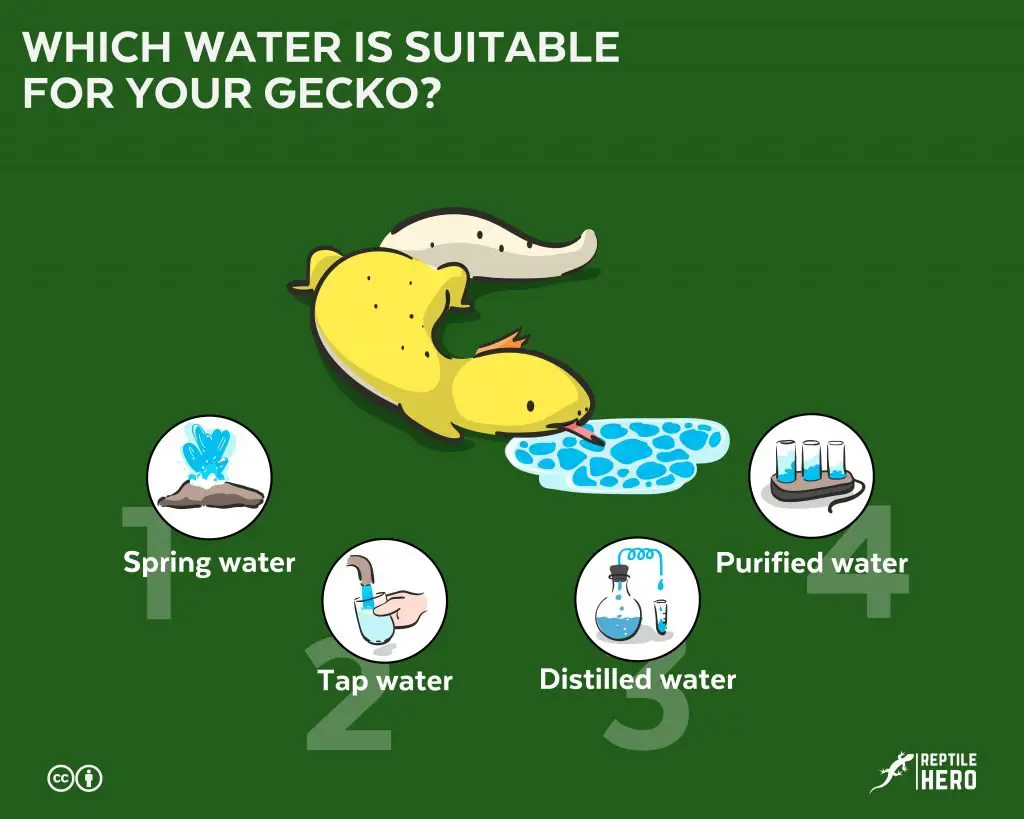
Help Geckos Stay Hydrated
I’ve heard and read people make all sorts of bold claims when it comes to properly keeping reptiles in captivity as pets. But I don’t think anything can top the claim “geckos don’t need water” when it comes to which one is the craziest.
Why Should You Give Geckos Water?
Here’s the deal: just because you’ve never seen a gecko drinking directly from a water dish (perhaps you just added a new member of the family) doesn’t mean that it doesn’t need it all. Geckos of course do drink water!
Geckos, much like any other living creature on earth, need water just as much as they need air to live. They just need it in lesser amounts. In fact, even when put against other herps, geckos only need 1 to 5% of the total water requirement of amphibians.
Overall, water is essential for gecko health and well-being.
It ensures that numerous vital internal and external body processes run smoothly. Geckos need it for digestion, body temperature control, growth, and shedding among other things. The availability of water in the environment also affects the behaviors related to mating, incubating eggs, and foraging for food.
Which Water Is Suitable For Geckos?
In nature, water available to all wildlife contains some salts and minerals. And as I have previously mentioned, natural water is important for healthy physiological functioning. However, that is not the case in most urban areas, where geckos are kept in captivity as pets.
Spring Water
According to experts the best choice of water for drinking, soaking, and misting is natural spring water because it is what’s naturally available to geckos in the wild. It comes from deep within the ground – being filtered through porous rocks like limestone and purified by Mother Nature.
You can find bottled spring water in groceries, however, they do come at a high price. Usually, bottled spring water undergoes an additional treatment with ultraviolet light to completely eliminate unwanted and harmful microorganisms as well as a fine filter to remove silica and sand among other things.
Some may find the clean up of mineral deposits from spring water in bowls and enclosures a hassle, so I’ll share a practical cleaning tip with you: get some vinegar and soak your disk in it or a rug for cleaning inside the vivarium.
Tap Water
Whether or not you could use plain tap water in helping your gecko stay hydrated is highly situational. Some others have tap water safe enough for human consumption while others have tap water heavily contaminated with potentially harmful microorganisms.
Other keepers argue that it is completely unfit for drinking because chemicals have been added to it for treatment. So while it has salts and minerals, it could also have chlorine, chloramines, and fluoride.
If you want to get rid of the chlorine in your tap water, try doing the following:
- Let collected tap water air out for at least a whole day
- Using two containers, transfer tap water back and forth at least 10 times
- Transfer tap water to a kettle and let it boil for about 15 minutes
It’s best to contact your local office or water suppliers to know the exact contents of your plain tap water. Some use reptile-safe water conditioners like ReptiSafe (here on Amazon) for additional assurance on the quality of their tap water.
Filtered Water
If you want to be absolutely sure of the content and safety of your water, consider investing in a good filtration system. A multitude of different filtration systems is available in the market. Most can remove chlorine and other pathogens while adding much-needed minerals such as calcium, magnesium, potassium, and sodium.
Personally, I would recommend you get a Reverse Osmosis (RO) water filter system (here on Amazon) along with a re-mineralizer (here on Amazon). If you ask why, well since most aquatic set-ups for fish and amphibians use RO water, it’s definitely safe for reptile use as well. However, the process will not only remove undesirable metals but also necessary minerals.
To reiterate: what may be convenient for you – as in using mineral-free water to avoid cleaning up mineral deposits – may not necessarily be good or healthy for your adorable reptilian friends.
Distilled Water
Experienced gecko keepers have been using distilled water for their reptiles for years now because it’s tasteless, odorless, and basically purified water.
Since it is considered by some as the “purest” kind of water available, many make the mistake of claiming that it is 100% harmless. However, this is not the case!
In recent years, experts have been advising against the practice of using only distilled water for gecko hydration. Due to the removal of healthy minerals, water becomes acidic. Prolonged consumption and exposure could prove extremely dangerous as the body is forced to compensate by using minerals from teeth and bones to neutralize the acid.
What’s more, it could actually increase the risk of long term ilnesses.
However, if you’re going to use it for commercial diets rich in minerals and other important nutrients it’ll be fine. In fact, Repashy’s Crested Gecko Diet meal replacement powder should be mixed with distilled water. Some hobbyists also prefer using distilled water for misting so they won’t have to exert extra effort in removing mineral deposits inside the tank.
How Geckos Get Hold Of Water
Geckos have interesting ways of obtaining and storing water.
Water Collection and Vent Drinking
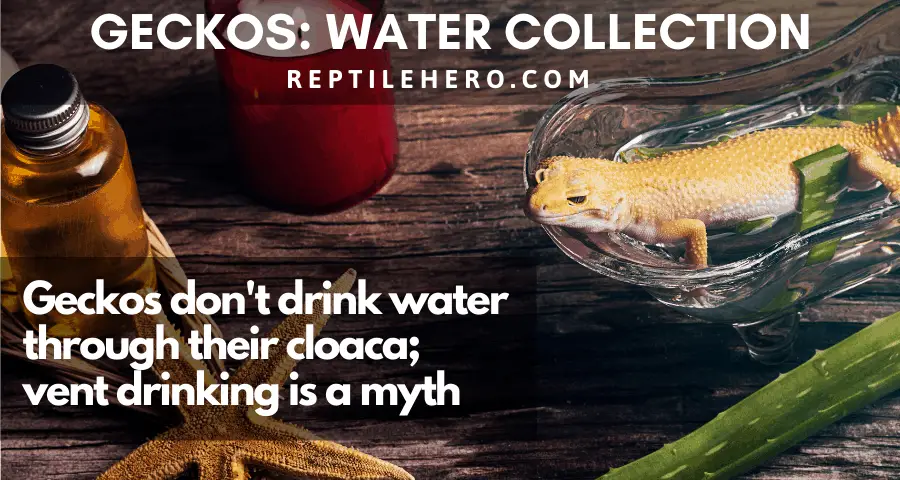
While chatting with other pet owners I came across quite an interesting topic: vent drinking. Just as the term suggests, some people have asserted that geckos drink water from the rear end. To elaborate, they say that lizards hydrate themselves while opening and closing their cloaca during soaks.
This has been proven false numerous times already. In one study, researchers dyed water for bathing to see just how and where exactly do lizards absorb it. Guess what, they were not able to track ingestion of water from the cloaca whatsoever. However, many still believe that this actually happens.
So if that isn’t a thing, how do they acquire the water they need? Well, there are three main methods. The first way is by drinking directly from available sources of water.
Another way is through metabolic water production, where they extract water from the food they eat. Using this second method, reptiles can meet up to 10 to 20% of their total water requirements.
The final and most interesting way is collecting water through the skin, this process is called moisture-harvesting. Scientists found out that lizards had a network of straw-like structures in their skins – all over their bodies – that basically transport water collected on the skin from the environment to their mouths using high-powered microscopes. This method is commonly seen in species that originate from dry habitats.
Water Storage And Conservation
After collection comes the storage and conservation of water. Though this may not be that much of a big deal for geckos coming from mesic habitats (where water is usually available), it could very well be a matter of life and death for species that originally lived in xeric habitats (where water is scarce).
But thanks to evolution, geckos and other reptiles who have had to live through droughts can save as much water as they can using ingenious means:
- Species from countries of temperate climate bulk up on food with great moisture content to prepare for dry seasons, when water is not as readily available;
- Others will try to squeeze out the tiniest drops of water resting on plants or the ground with their tongues;
- There are also lizards capable of using their urinary bladders as temporary storage vessels for water to survive 2 to 3 months of hot and dry summers;
- Some retreat and burrow into cool and humid spaces to make up for the water they have lost;
Generally, however, the principal mechanism that allows for water conservation in gecko is – ironically – waste excretion.
As you may have noticed, gecko poop is quite incredibly dry. But it doesn’t stop there, because unlike us humans, their pee is also relatively solid. I’m talking about the white odorless speck that you often see present along with their droppings.
So, how do they do this? They do it through a process called uricotelism which allows them to retain water by eliminating nitrogenous waste as uric acid instead of urea or ammonia.
Ways To Give Your Gecko Water
Each keeper has a preference when it comes to keeping their reptiles hydrated. Some prefer using automatic systems, while others prefer doing things personally. Many use a combination of both. The most important thing to keep in mind when giving your geckos water is that their needs always come before your convenience.
Water Bowl
One of the most common and popular ways of offering water to geckos is with the use of bowls and dishes.
They come in a variety of sizes, colors, styles, and materials. You can reuse old and rarely used household items that would otherwise be thrown into the garbage like old cups, bowls, and saucers.
An assortment of other options can also be easily bought from local pet shops and online stores. You can find simple ones that are easy to clean or ones that are more aesthetically pleasing to double as decor in the tank, complete with fake moss and vegetation. If you find daily refilling bothersome, some have detachable bottle dispensers with it so you could go a week without needing to refill.
Water dishes not only serve the purposes of drinking but also soaking. So if your gecko particularly likes to regularly soak, it would be better to buy bowls that are larger for them to easily fit inside. Keep in mind though that not all reptiles are good swimmers and are therefore at risk of drowning so take the depth of the container into consideration.
Moving Water Features
Interestingly enough, some arboreal geckos seem unable to detect standing water and as such only drink when water is visibly and audibly flowing or dripping. A quick and easy way to address this by using a small air pump and an air stone – those usually used for aquariums – and placing them in your gecko’s water bowl.
Another alternative is to make a drip system at home with a water jug or bottle. Just solder one or two holes at the bottom and place it on top of their screened tanks. Make sure that the holes are big enough for water to drip down but also small enough that it won’t flood your beloved pet’s enclosure. Set it up so water drops onto plants, branches, or into a small container so your substrate doesn’t get too wet.
You could also incorporate other items to make for a more efficient DIY drip system such as a needleless IV drip set. You could better control how much and how fast water flows into the vivarium using the roller clamp on it.
Ready-made water features are also great options. One of the most common ones is made to imitate waterfalls. This type usually comes with built-in fake plants, filter pads, and adjustable water pumps. They’re easy to refill and clean as well. If it sticks out like a sore thumb, just place a few rocks and plants around the base to make it seamlessly blend into its surroundings.
Misting Systems
The simplest and easiest way to make sure your gecko stays hydrated even if it doesn’t like drinking from a bowl is through misting.
When misting manually, most hobbyists use readily available hand-held sprayers. This method effectively does away with the time and effort needed for daily cleaning and refilling of water dispensers.
Geckos from arid regions can also benefit from this type of watering method. When misting gecko species from hot and dry places, however, the tank must have enough ventilation and heat so humidity can stay relatively low.
If you have more than one reptile in your care, you could opt for automated misting or rain systems. You can make one on your own with PVC pipes and micro-irrigation kits or buy ready-to-use misting systems (as this one on Amazon) similar to the ones we see in the grocery’s vegetable and fruit section.
A rain system is another good choice for providing ample moisture for your cold-blooded friends. This is more appropriate for tropical species as they are more accustomed to rain in the wild, desert species may find this much water raining down on them stressful. If you’re wondering how that would look like, watch this video:
Important Factors To Consider
Water Safety
The water you give your geckos is only as clean and safe as the container you keep it in. Dirty basins act as the perfect breeding ground for algae, bacteria, and other harmful organisms. Regular disinfection is therefore key to ensure your baby is drinking clean water.
A surefire way to sanitize a water dish is with bleach: dilute about 6 tablespoons of bleach with 4 cups of distilled water, let the dish marinate in the mixture for 3 minutes, then thoroughly rinse and dry before using it again.
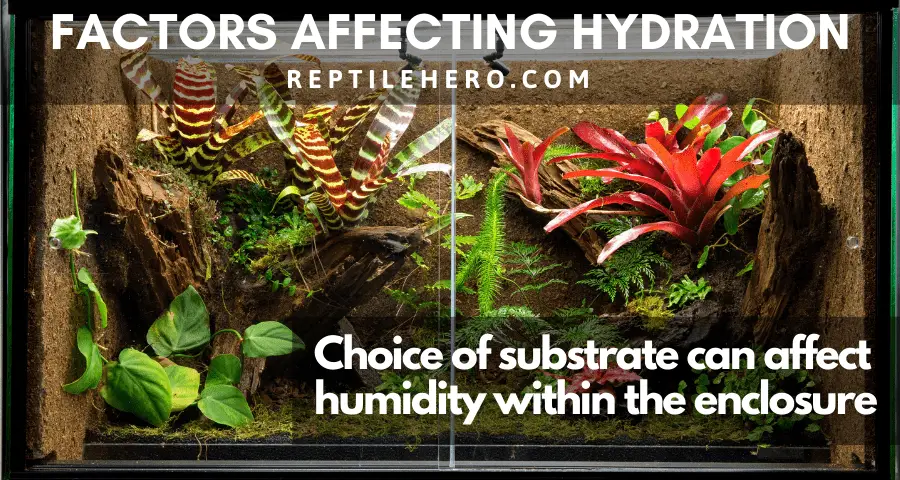
If water dispensers are directly exposed to your heating element, evaporation quickens. So whether you’re using a small water dish or a large waterfall feature, better keep it on the cool side of the cage.
Useful in Shedding
When shedding old skin, your soft-bodied lizards will need additional warm soaks. Similar to when providing water in bowls and dishes, the soaking container must not only be deep enough for a good soak but also shallow enough to prevent drowning. This can be done 2 to 3 times a week, 15 to 20 minutes at a time.
Water Stagnation
Geckos generally have a wide range of water requirements depending on their species. However, experts recommend that water offered to geckos should at least be changed and refilled at least 2 times per week regardless of their species. If the ones in your care have a habit of passing waste where their drinking and soaking water is kept, it should be changed as soon as it is contaminated.
Humidity Level
Bear in mind that the presence of water inside reptile enclosures increases levels of humidity. Even for mesic gecko species, there is such a thing as too much humidity. Also, keep in mind that things such as choice of substrate and ventilation affect humidity as well. So to make sure that your baby is safe, constantly monitor humidity with a digital hygrometer (here on Amazon).
Dehydration In Geckos
Smaller gecko species are at greater risk of dehydrating quickly, this is also true for hatchlings and juveniles. Meanwhile, adults raised in captivity could go three days without water.
Even though mild cases of dehydration are easy to treat and relatively harmless, it could be a symptom of major underlying issues. Excessive or severe cases can also cause significant ailments like uremia, acidosis, and even fatal shock.
Signs
Depending on the severity of dehydration, your gecko may display two or more of these physical and/or behavioral symptoms:
- Skin is dull, dry, wrinkly, and flaky – no longer elastic
- Tail develops waves
- Hip bones and ribs jut out
- Lack of energy or lethargy
- Infrequency of defecation or constipation
- Shed skin is retained especially around the head, toes, tail, and crest
- Eyes sink into the skull
- Mucous membranes in the mouth dry up
- Tongue looks sticky or slimy
- Loss of appetite or starvation
- Muscle wasting
Causes
Numerous reasons can account for dehydration in geckos:
- Improper diet – reliance on canned and dried feeder insects
- Temperature is higher than optimal
- Humidity is lower than needed
- Lack of water source
Treatment
Mild cases in geckos can be easily treated at home by simply address the causes of their dehydration:
- Improve diet with nutrient and moisture-rich food
- Lower temperature to meet optimal level
- Increase humidity to as necessary
- Provide constant source of clean drinkable water
For moderate to severe cases, I’d say pay the vet a visit – the dehydration could point to a more serious underlying issue. As first-aid, you could do all four of the things I’ve already listed and also let your gecko drink or soak in a 1:1 mixture of water and Pedialyte or Gatorade.
Prevention
As always, it’s much better to err on the side of caution – practice the following to prevent your beloved gecko from getting dehydrated:
- Give them a well-balanced diet – if giving canned and dried insects, soak them in water first
- Provide clean water as often as every day – regardless if for drinking, bathing, or cooling
- Clean water reservoirs regularly – avoid using strong chemical cleaners that are hard to rinse off
- Adjust temperature and humidity according to the species’ needs
- Give them lukewarm soaks especially when shedding
Takeaways
- Water is key for optimal physiological processes of geckos – they stay hydrated by directly drinking water, extracting water from their food, and by absorbing moisture from their environment.
- Spring and filtered water are good for drinking, soaking, and misting. Tap may or may not be safe depending on where you’re from. Distilled is recommended for occasional misting and mixing with commercial powder diets.

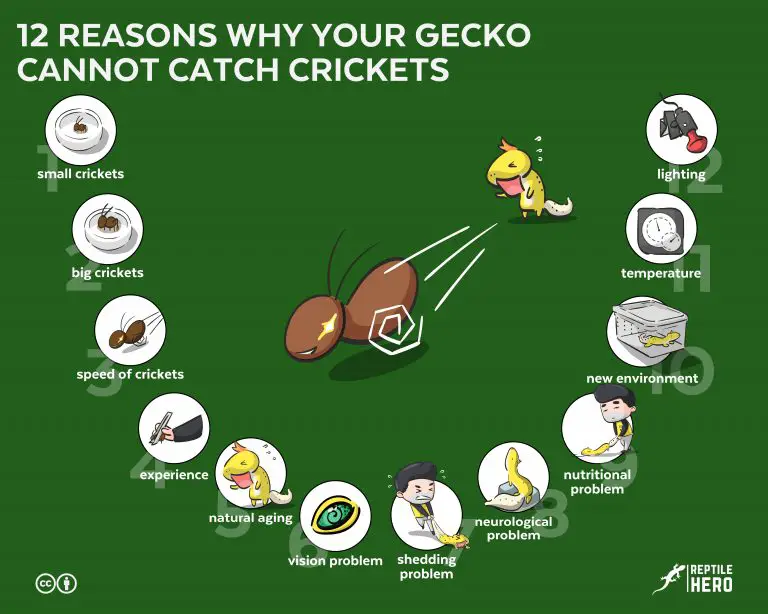
![Is It Possible To Overfeed A Gecko? [4 Signs]](https://www.reptilehero.com/wp-content/uploads/2021/12/overfed-gecko-cc-768x614.jpg)
![Picky Eater Leopard Geckos – How To Feed it [8 Solutions]](https://www.reptilehero.com/wp-content/uploads/2021/12/picky-eater-gecko-cc-768x614.jpg)
![What Do Dwarf Geckos Eat? [With Examples + 6 Things To Remember]](https://www.reptilehero.com/wp-content/uploads/2021/12/dwarf-gecko-eats-cc-768x614.jpg)

